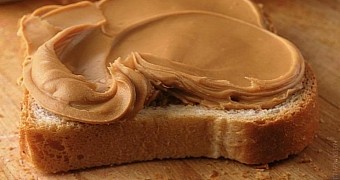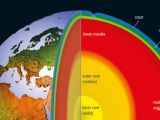If it's true what they say that diamonds are a girl's best friends, then chances are that no lady anywhere in the world will ever again feel lonely, just as long as she has a jar of peanut butter hidden away in a cupboard somewhere in her house.
Thus, researchers with Germany's Bayerisches Geoinstitut claim that it is very much possible to turn peanut butter into diamonds. Apparently, the trick is to use heavy machinery to subject the peanut butter to conditions found deep in the Earth's lower mantle.
How diamonds form deep in the underground
As freakishly expensive as they are, diamonds are really just one big pile of simple carbon atoms carefully arranged by Mother Nature into a crystal structure. This structure, known to the scientific community as a diamond cubic, is a repeating pattern of atoms.
Scientist Dan Frost with Germany's Bayerisches Geoinstitut and fellow researchers explain that one of the theories brought forth to explain the formation of diamonds postulates that it all started millennia ago with rocks that pulled carbon dioxide from the planet's oceans.
In time, these rocks were drawn into the Earth's mantle. Having reached impressive depths, they were exposed to intense heat and pressure. Because of these extreme conditions, the rocks let go of the carbon dioxide. Eventually, this compound broke apart as well, and the carbon contained in it came to form diamonds.
Recreating the process in laboratory conditions
The brainiacs behind this research project say that, apart from having an exquisite taste and being possibly the best treat ever, peanut butter contains quite a lot of carbon. Just for the record, it must be said that the same is true about all other foods and living things.
Hence, when the scientists exposed peanut butter to temperatures and pressures as intense as the ones documented deep in the Earth's mantle, teeny tiny diamonds were formed, Gizmodo informs. True, the hydrogen that's bounded to carbon in peanut butter caused an explosion, but the outcome was impressive nonetheless.
“A lot of hydrogen was released that destroyed the experiment, but only after it had been converted to diamond,” researcher Dan Frost told the press in an interview. Besides, it appears that the process is by no means a fast one. On the contrary, it can take weeks to grow a diamond merely two or three millimeters big.
Still, Dan Frost and fellow brainiacs believe that their work could one day serve to develop a new way to obtain artificial diamonds for use in quantum computing and superconductors. Until then, they'll get to keep themselves entertained blowing up things in carefully controlled laboratory conditions.

 14 DAY TRIAL //
14 DAY TRIAL // 



